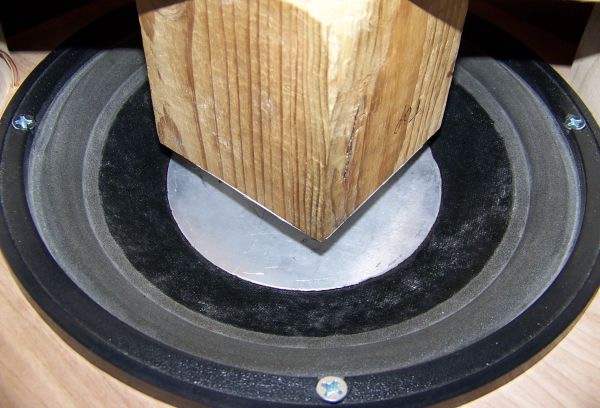
An infrasonic subwoofer is a woofer or a complete loudspeaker which is dedicated to the reproduction of low-pitched audio frequencies. The typical frequencies’ range for a subwoofer are about 20-200 Hz for the consumer products, below 100 Hz for professional live sound, and below 80 Hz high-fidelity audio/visual reproduction standard for movie theaters approved systems. Subwoofers are intended to augment the low frequency range of loudspeakers covering higher frequency bands.
When frequency decreases, hearing becomes less sensitive thus sound pressure must be significantly high for humans to perceive infrasound. An ear is a primary organ for sensing infrasound but at higher levels, it is possible to feel infrasound vibrations in various parts of the body.
Infrasonics is referred as the study of such sound waves covering sound beneath 20 Hz, down to 0.001 Hz. This frequency range is utilized for monitoring earthquakes, charting rocks and petroleum formation below the earth. Such sound waves are also utilized in studying the mechanics of heart such as ballistocaridography and saismocardiography. Infrasound is characterized by an ability to cover long distances and get around obstacles with little depletion.
Difficulty level: Moderate
Time required: 2 hours
Resources required:
- Tool box
- Hard boards
- Glue
- Subwoofer device
Instructions
1. Collect Speaker Cones
To build an infrasonic subwoofer, you must have an appropriate speaker cones. There are two options to build an infrasonic subwoofer either a double speaker system with a cone on each end of the enclosure or with only one cone. Here we are suggesting setting up a double speaker system. While selecting a cone one should keep in mind that is shouldn’t be less than 21 inch or 24 inch in diameter and chose to use a Pyle 21 inch speaker. You should also use a driver that has a QES of 0.38 + -20 % for better quality of sound production.
2: Enclosure
After finalizing the cones, select a wood type that is to be used as enclosure. The size of plywood should not be less than 18 mm as it is considered to be the best material. One should avoid poor quality or Chinese plywood as it is not consistent. Usually plywood is very sturdy and holds up well the air pressure produced by the large speaker cones. To brace the structure and to make the box you need adequate plywood and each wall should be braced to handle the bass. It is also advised to make the box as much bigger as you can. Here we are going to build 30’x30’x70. It should not be square. This will greatly minimize its ability to produce infrasonic frequencies low enough.
3. Make the Case
This is the time to make the main box. This should be bigger in size as it will be better. First you are supposed to dissect all the corners to the proper dimensions and chalk out as how you will create the support system within the box braces. The efficiency of your sound system depends upon how stronger the walls are because there is a lot of pressure exerted on the walls. Thus the subwoofer will be able to create such low frequencies. Here we are using a combination of wood glue and very less screws as the box should be airtight. This will also diminish the possibility of air leaks and rattling. After giving it a shape we will use any better quality adhesive to seal all the corners and potential air leaks.
4. Installation
Now you are allowed to install the speakers into the enclosure. While fitting the speakers make sure that mounting is solid. Further install the bracing and the bracing should be on all sides of the enclosure and should be stick properly. In this phase we are forming braces from speaker to speaker, from side wall to side wall and from bottom to top and at the end putt clamps to hold everything in place while the wood glue set overnight.
5. Electronics and Testing
This is the step where we will test the cone if it is working. We will connect the cone up to a 1000 watt amplifier and run sine tones through it in order to confirm that it is functioning well. in very fewer case if the speakers are shipped and they are dead on arrival or defunct then in order to break the cone run a sine tone. Very powerful amplifiers are required to check it and put it into operation. Choose two live sound amplifiers. Connect each channel with 500 watt amplifier and switch to serial mode to which collectively made one amplifier a mono 1000 watt amplifier. If your cone started working the solder together thick gauge audio cables and connect it from the speaker tow a two channel speakon wall mount connector, insert into wall of the speaker. Now are enabled to unplug your speaker but also insert it into a larger live sound system.
Later, test all the wiring by running since tones through input to make sure all of your connections work.
6. Cabling
If you are done with the testing work, solder together the cabling and install. Solder the speakers, cut the holes to extact size of speakon jacks and corresponding panel. Later, test the wiring and run sine tones through the input again. This is the step where you will get a chance to merge the wooden material and metal to the side of subwoofers.
7. Sealing
Finally check all the possible air leaks in your subwoofer and seal them. Keep in mind any air leak can damage your subwoofer so seal all joints and corners with silicon or any adhesive. For long life you can also put apoxy on all corners on the subwoofer.
8. Put a lid
Now put the lid on the finished unit. Seal all the structure and if you plan to paint it, coat it but first cover the cones with plastic to protect them.
Frequently asked questions
How can we lower the frequency?
If you would like to take the project one step further, you can add 100 grams of bondo to cone to lower the frequency.
Quick tips
1: You can opt double coat to get a rich color and then give it a try.
2: You can crank that up, but be slow about it to see how you react to the low frequency.
Things to watch out for
- Make sure you perform every action carefully to avoid any kind of injury.
- Use a good quality glue so that the durability of the speakers is good.

